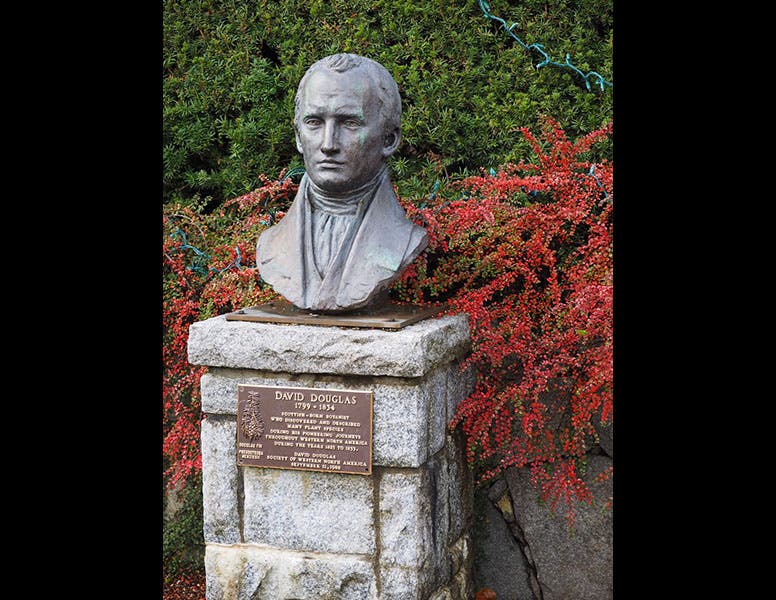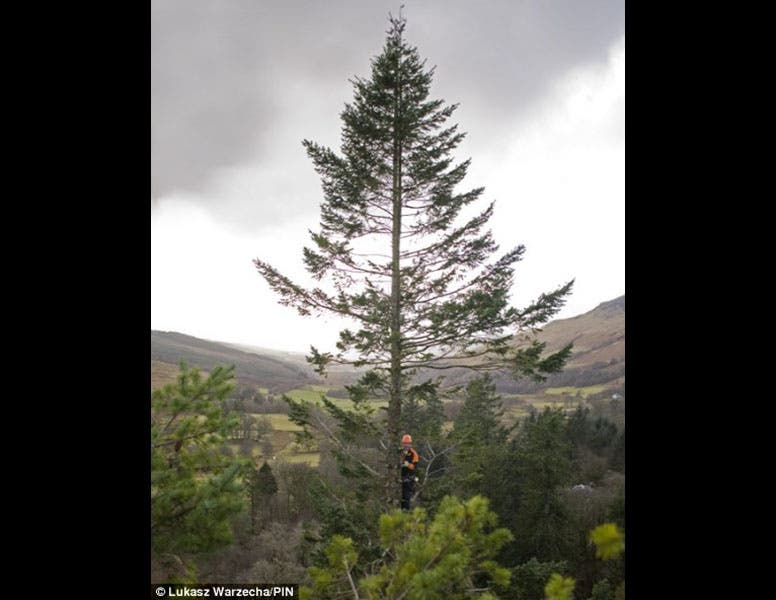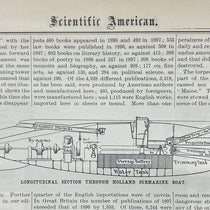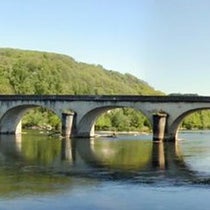Scientist of the Day - David Douglas
David Douglas, a Scottish botanist, was born June 25, 1799. Douglas came from a lower class family in Scone, a town near Perth that was renowned mostly for the local manor, Scone Palace. Douglas managed to acquire a modest amount of schooling - he learned Latin, for example - but his real love was the outdoors: animals, birds, and especially, plants and gardens. He managed to get a job as an assistant gardener at Scone Palace, and then he was fortunate to spend several years at the Glasgow Botanic Garden, where he arrived the same year as their new professor of botany, William Hooker, who would later become the first director of Kew Gardens in London. Hooker was only 35 years old when he met young Douglas, and the two hit it off extremely well, which means Douglas learned a great deal about plant identification and taxonomy. About this time (1823), the Horticultural Society of London, founded in 1804, was looking to sponsor a collector who would go to some far-flung place, collect seeds, cuttings, and sprouts, and bring them back to be grown in the Society's gardens at Chiswick. It just so happened that the man hired to construct the gardens at Chiswick House in west London had previously rebuilt the gardens at Scone Palace, and he offered his opinion: pry that Douglas fellow away from Glasgow and send him out to collect plants. Hooker chimed in from Glasgow and agreed whole-heartedly. And so it came to pass.
Douglas was first sent to the east coast of the United States, and although that trip was short - less than a year - it was extremely productive, yielding new varieties of apples and pears and plums (the Washington plum was a bit hit among London fructivores), and gardeners raved about the accomplishments of young Douglas. In 1824, Douglas was sent out once more, this time to the Pacific Northwest, and this extended venture was a hundred times more productive, resulting in a great change in the landscape of Great Britain. Travelling with factors from the Hudson Bay Company, Douglas ascended the Columbia River, crossed the Continental Divide, climbed a few fourteeners along the way, and identified and collected over 200 new plants. He was the first Englishman to see and bring back cones of the Sugar Pine, the Lodgepole Piine, the Ponderosa Pine, and, of course, the Douglas-fir, all of which would soon be growing in English gardens and on Scottish estates within a year of his return in 1827. A number of Douglas-firs were planted on the grounds of Scone Palace, which makes them nearly 190 years old today (second image), and while they aren't quite as stately as some of the Douglas-firs in the Pacific Northwest, which can top 300 feet, several Douglas-firs in England exceed 200 feet in height, including the Stronardon Douglas-Fir, which is the tallest tree in the British Isles (third image).
Douglas made one more trip to the Northwest, with a most unhappy outcome. He visited Hawaii and became the second European to climb Mauna Loa. However, on his way to climb Mauna Kea, he fell into a wild cattle pit trap that was unfortunately already occupied, and he was trampled to death by an angry bull. Suspicions of foul play arose but were never confirmed. He was only 35 years old at the time of his death. But he lives on in his tree, which incidentally is not a true fir, which is why it is spelled with a hyphen.
There are only three monuments to Douglas known to us. One is the David Douglas Pavilion at Scone Palace, which is constructed of wood from Douglas-firs grown on the estate, and has a marvelous fir-cone pendant inside (fourth image). The second is a bust of Douglas at the VanDusen Botanical Garden in Vancouver, British Columbia (first image). The Garden has chosen to honor only three botanists with sculptures wrought by Jack Harman; one is the obligatory Linnaeus, but the other two depict botanists who were important to the Pacific Northwest: Archibald Menzies and David Douglas.
The third monument is a cairn in Hawaii at the site of Douglas’s death (fifth image).
Dr. William B. Ashworth, Jr., Consultant for the History of Science, Linda Hall Library and Associate Professor, Department of History, University of Missouri-Kansas City. Comments or corrections are welcome; please direct to ashworthw@umkc.edu.











